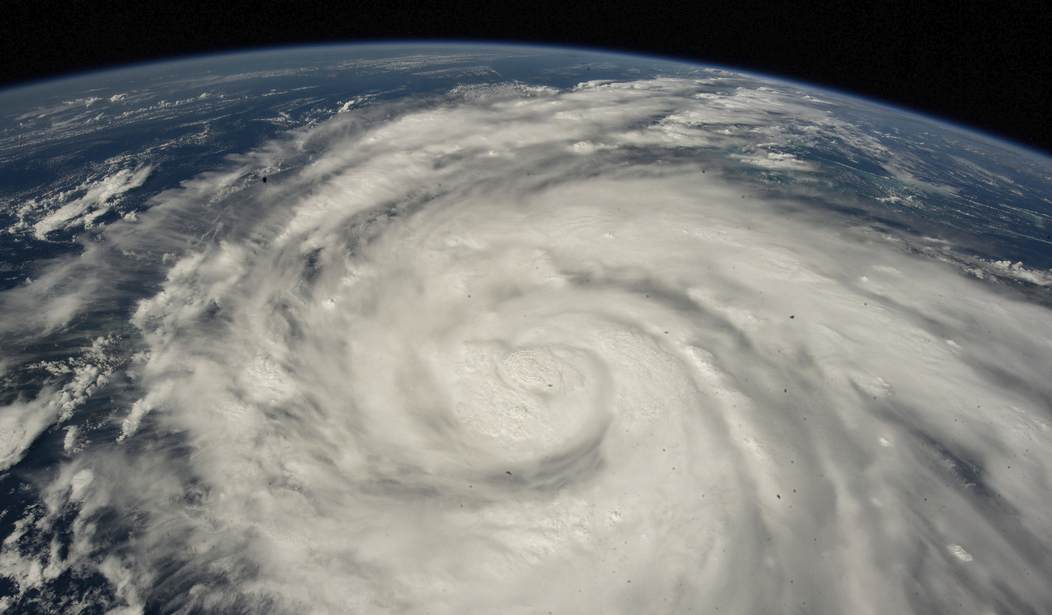First, before anything, our warmest thoughts and deepest prayers for the safety of all in Ian’s danger zone, including those first responders and emergency management personnel who have stayed – or in the case of power trucks and National Guard troops, traveled TO the zone – to assist whenever he finally pulls away. Having been through 3 major hurricanes, a handful of feisty Cat 2’s (including Sally just 2 years ago), plus many lesser blows ourselves, our hearts are in our throats for all the folks in harm’s way. God bless you and keep you safe, every one of you.
At the moment, Hurricane Ian is proving the maxim our son Ebola learned working with the Joint Typhoon Center while stationed in Guam – If it slows, it grows, and goes north. Ian is doing all of that: slowing to a virtual crawl over super warm water, which is allowing rapid intensification – hence his flirtation with the edge of a Cat 5 storm – and he is tracking NNE. This is going to have dire effects on everyone and everything in his path, from the devastating wind itself to the amount of water being forced ahead of such a massive and powerful system on coastal/canal/estuarine properties, compounded by the amount of rain that will be deluging the entire center of Florida for hours upon hours, if not days. The sheer volume of water is going to be incalculable and is always the most deadly threat during a hurricane. It is also responsible for the most damage costs incurred in any tropical event. Water destroys things thoroughly.
There are also new concerns with Hurricane Ian’s adjusted path, which now swings him back out over the Atlantic via Jacksonville, and then hitting the East Coast somewhere around Savannah, Georgia or Charleston, South Carolina. These are major East Coast seaports (Savannah is ranked #4 in the country for volume), which have also been picking up the overflow from the California ports’ backlog. (I hit on that in a previous post here.) Now, not only do the citizens of these low country cities have to prepare for a potentially devastating event that wasn’t even on their radar 3 days ago, the ports have massive container ships waiting to be unloaded stacked up, plus those inbound, who now have to turn tail and get outta Dodge. If you check the active map on MarineTracker.com it looks like schools of fish hightailing it away from a barracuda – they have to get out to sea, and FAST.

There is unloaded cargo on many of those. It could be your replacement auto parts, could be Christmas inventory, maybe perishables, or coffee from Brazil. It’s money already spent to purchase and ship those goods heading back out to sea, hoping to be unloaded somewhere, sometime soon. That’s horrible news for an already stretched-to-the-breaking-point supply system, hitting business bottom lines yet again. God willing the ports themselves don’t sustain much damage.
In Florida, October through June is when they start picking oranges, with December-May the best part of the season. Polk County, just inland, east, and a smidge north of Tampa, is the largest citrus-producing county in the state. Ian’s track currently runs dead through it. Ripe fruit on a tree – your operating profits for the year – with 150+ mph winds coming has to have Florida orange growers quaking. It was already predicted to be a smaller crop due to an incurable insect spread disease called “citrus greening”, so this has the potential to be catastrophic. Wall Street is already looking at that possibility: orange juice futures on the commodities market are already moving up this morning, at +9.55 (+5.24%).
There are myriad other crops planted (or being planted) in late September/early October that keep the country in fresh produce like tomatoes, etc during the winter. For example, did you know Florida is the nation’s leading producer of “winter” sweet corn? Well, it is. Last year a freeze caused those prices to spike more than double, along with green beans, No one needs anything else inflationary added to their plate this year.
The impacts of this storm on our already fragile supply chain and economy could be significant.
Again. God bless everyone and keep them safe. See you on the backside.







Join the conversation as a VIP Member